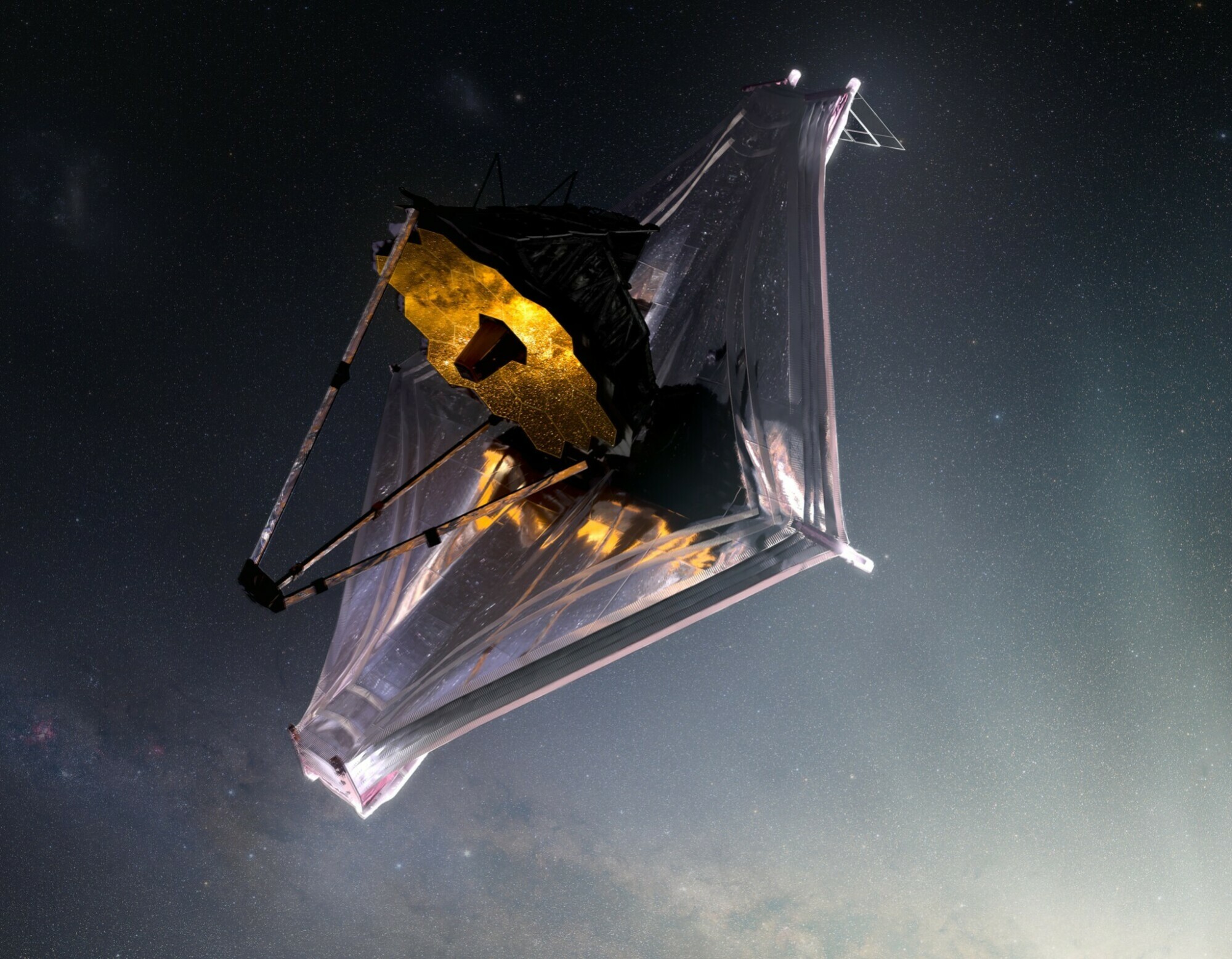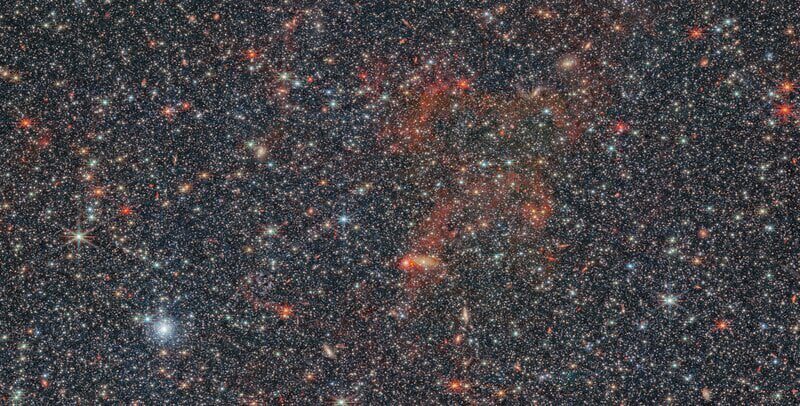Webb telescope stares into a galaxy that’s long intrigued scientists

In 1884, over a century before the James Webb Space Telescope was even imagined, astronomer E. E. Barnard spotted a faint object in the sky. He supposed it was a great cosmic cloud, called a nebula. Other scientists weren’t so sure.
Then in the 1920s, the famed astronomer Edwin Hubble — which the Earth-orbiting Hubble telescope is named for — deeply investigated NGC 6822. He found it existed well beyond our Milky Way galaxy, helping to prove objects lay outside of our cosmic neighborhood. Scientists continued to investigate NGC 6822, which today we know as a galaxy located some 1.5 million light-years away (meaning it takes 1.5 million years for its distant light to reach us).
Now, the Webb telescope — the most powerful space observatory ever built — has peered into NGC 6822, showing “countless stars in incredible detail,” the European Space Agency (ESA) explained.
– In the first image below, you can see these countless stars. This picture is made possible by Webb’s unique abilities: The telescope can view a type of light we can’t see with the naked eye, called “infrared light,” which travels in longer waves than visible light and can pass through thick cosmic clouds that obscure the stars and details inside galaxies. “Here, the dust and gas that pervade the galaxy are reduced to translucent red wisps, laying the stars bare for astronomical study,” the ESA explained. Webb captured this view using its Near-InfraRed Camera.
– The second image, taken with a different Webb camera called the Mid-InfraRed Instrument, sees light emitted by the great billowing clouds of gas and dust in NGC 6822. Here, many stars are obscured, but the camera reveals rich detail about these clouds. The blue gas, for example, plays “a critical role in the formation of stars and planets,” the ESA explains.


The galaxy NGC 6822 continues to intrigue astronomers. Similar to some of the most ancient galaxies in space (which are many billions of light-years away), NGC 6822 has a “low metallicity.” This means that compared to the simple elements hydrogen and helium, the galaxy lacks the heavier elements created by stars or stellar explosions — the likes of carbon, oxygen, nickel, and iron.
It’s unusual that a younger galaxy has such a make-up. “This makes contemporary low-metallicity objects (like NGC 6822) objects of interest for understanding how processes such as the evolution of stars and the life cycle of interstellar dust likely occurred in the early Universe,” the European Space Agency said. “This was the motivation for these observations of NGC 6822 with Webb: to better understand how stars form and how dust evolves in low-metallicity environments.”
The Webb telescope’s powerful abilities
The Webb telescope — a scientific collaboration between NASA, the ESA, and the Canadian Space Agency — is designed to peer into the deepest cosmos and reveal unprecedented insights about the early universe. But it’s also peering at intriguing planets in our galaxy, and even the planets in our solar system.
Want more science and tech news delivered straight to your inbox? Sign up for Mashable’s Light Speed newsletter today.
Here’s how Webb is achieving unparalleled feats, and likely will for decades:
-
Giant mirror: Webb’s mirror, which captures light, is over 21 feet across. That’s over two and a half times larger than the Hubble Space Telescope’s mirror. Capturing more light allows Webb to see more distant, ancient objects. As described above, the telescope is peering at stars and galaxies that formed over 13 billion years ago, just a few hundred million years after the Big Bang.
“We’re going to see the very first stars and galaxies that ever formed,” Jean Creighton, an astronomer and the director of the Manfred Olson Planetarium at the University of Wisconsin–Milwaukee, told Mashable in 2021.
-
Infrared view: Unlike Hubble, which largely views light that’s visible to us, Webb is primarily an infrared telescope, meaning it views light in the infrared spectrum. This allows us to see far more of the universe. Infrared has longer wavelengths than visible light, so the light waves more efficiently slip through cosmic clouds; the light doesn’t as often collide with and get scattered by these densely packed particles. Ultimately, Webb’s infrared eyesight can penetrate places Hubble can’t.
“It lifts the veil,” said Creighton.
-
Peering into distant exoplanets: The Webb telescope carries specialized equipment called spectrometers that will revolutionize our understanding of these far-off worlds. The instruments can decipher what molecules (such as water, carbon dioxide, and methane) exist in the atmospheres of distant exoplanets — be it gas giants or smaller rocky worlds. Webb will look at exoplanets in the Milky Way galaxy. Who knows what we’ll find?
“We might learn things we never thought about,” Mercedes López-Morales, an exoplanet researcher and astrophysicist at the Center for Astrophysics-Harvard & Smithsonian, told Mashable in 2021.
Already, astronomers have successfully found intriguing chemical reactions on a planet 700 light-years away, and the observatory has started looking at one of the most anticipated places in the cosmos: the rocky, Earth-sized planets of the TRAPPIST solar system.

